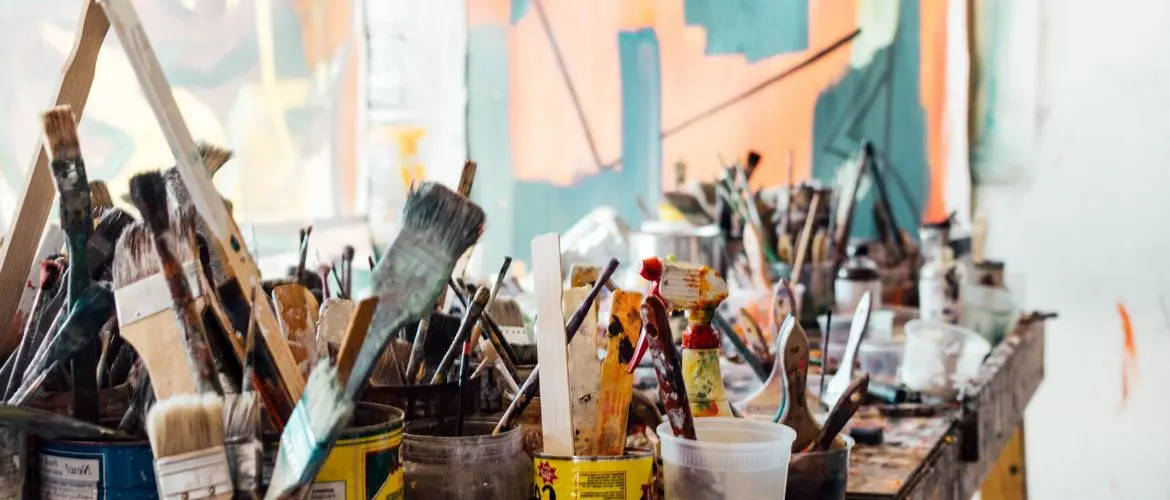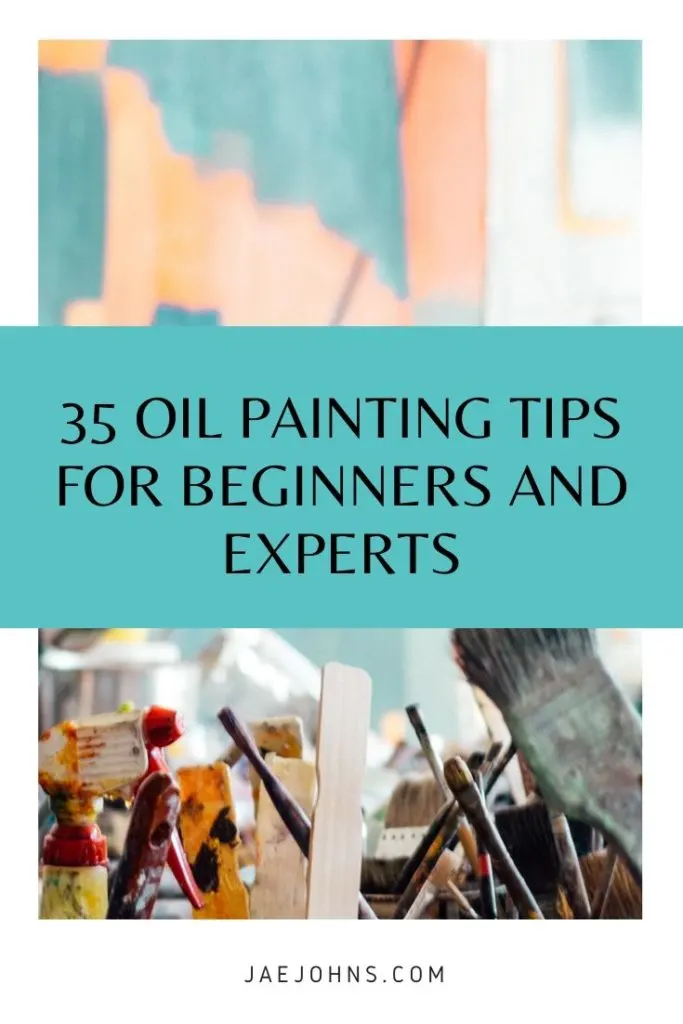 Learning how to paint in oil is an ongoing practice.
Learning how to paint in oil is an ongoing practice.
No matter how much time you spend doing it, there will always be more that you can learn as time passes.
I love oil painting because of its rich colors and wide range of control. Since this is one of my favorite mediums, I threw together a few tips that can really help the oil painting process.
Painting with oil is fun and largely experimental, so try to be creative with it.
Let Your Paint Dry Before You Move It
—If there is one surefire way to ruin your day when painting with oil, it is moving it too soon. Oil paint takes a fairly long time to dry, and moving it increases the chance of ruining it. When you are done painting, make sure that you leave it alone until you are certain that it is dry.
Mix Small Amounts of Paint
—Learning how to paint in oil can be a bit of an expensive learning curve. Mix small amounts of paint as you work to avoid creating more than you need. This can help you to save on paint, and consequently, money. As you paint more, you will learn how much you need for each work of art.
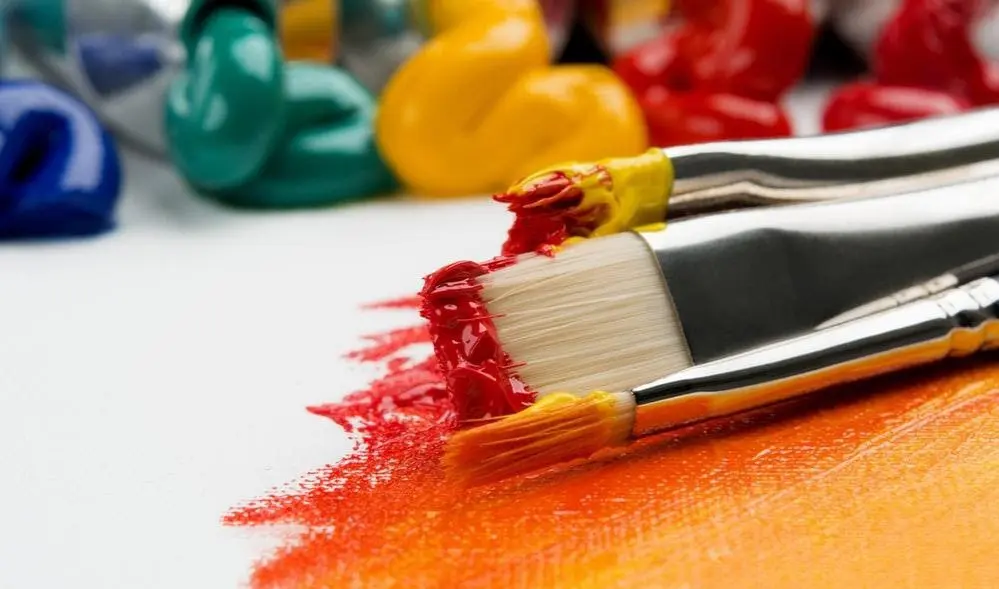 Photo by Anna Kolosyuk
Photo by Anna Kolosyuk
Experiment with Different Brands
—Not all oil paints are created equal, which is why painting in oil can be different every time. Try experimenting with different brands so you always know which ones are good for you. Subtle changes in pigment and color can really matter for style.
Try Out Different Brush Styles
—In the same way, you should try different paints, trying different brushes is crucial. Every brush has a different feel and output, which is why you must learn all about them. You might just find that some brushes suit your style or purpose better than others.
Allow Adequate Drying Time When Layering
—One major point of contention when learning how to paint in oils is layers. Painting in layers is one of the biggest perks of oil paint, but you must let the paint dry between layers. If you don’t you will end up ruining your painting or with an awkward texture.
Use A Varnish When You Are Done
—Painting with oil is a great way to make long-lasting paintings, but all paint need protection. A good varnish can go a long way when it comes to preserving your art. Take the time to let your paint dry and then add a varnish on top to keep it safe from natural elements like dust or sun.
Paint Layers When Paint is Partially Dried for Stunning Texture Effects
—Though you want to be careful when painting in layers, there can be perks to still-wet paint. Learning how to paint in oil is largely dependent on experimenting. You might learn that painting on still wet layers can give you an incredibly unique texture.
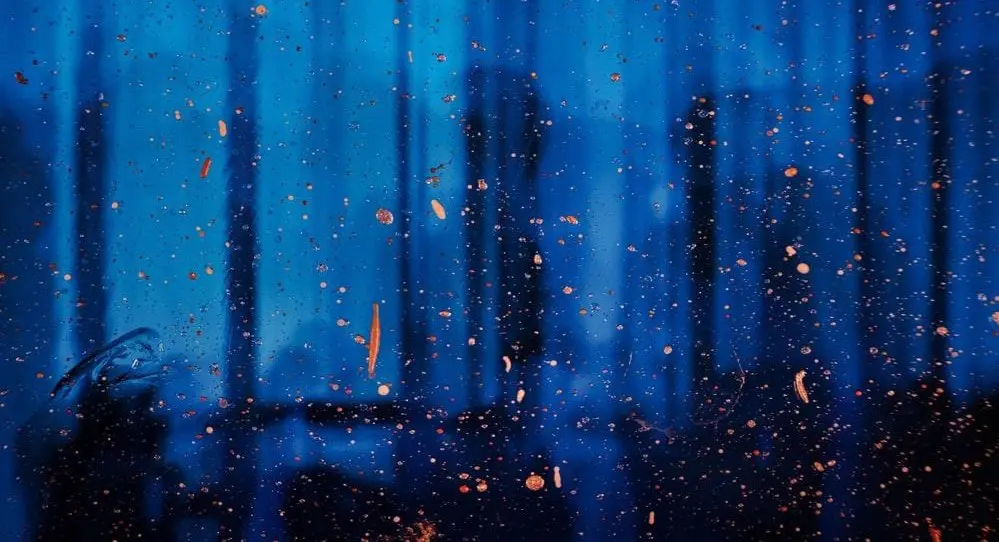 Photo by JR Korpa
Photo by JR Korpa
Use Splatter Art for Exciting Backgrounds
—Splatter art is one of the more fun kinds of painting around. Simply add a glob of paint to your brush and fling it at the surface. You might just find that this becomes your new favorite way to make backgrounds. It is also incredibly fun.
Use Tools to Sculpt Dried Layers for Controlled Texture
—Oil paint is unique because of its thickness. When painting with oil, you can always use spatulas and blades to create fun texture effects after the layers dry.
Blend Using Your Finger
—Though you might not want to do this without gloves, using a finger to blend gives you great control. So much of learning how to paint in oil is learning the paint. Find out what you are looking for and experiment with this personalized blending approach.
Try Painting with the Color Wheel
—The color wheel is the key to managing colors when you paint. As long as you are ready to spend time learning how to use it, you can make some seriously beautiful scenes.
Avoid Using Black Paint in Shadows
—A common mistake that people make is using black in shadows. When painting with oil, black paint can have a very serious contrast with all other paint types. Consider using purples, browns, and blues for shadows instead.
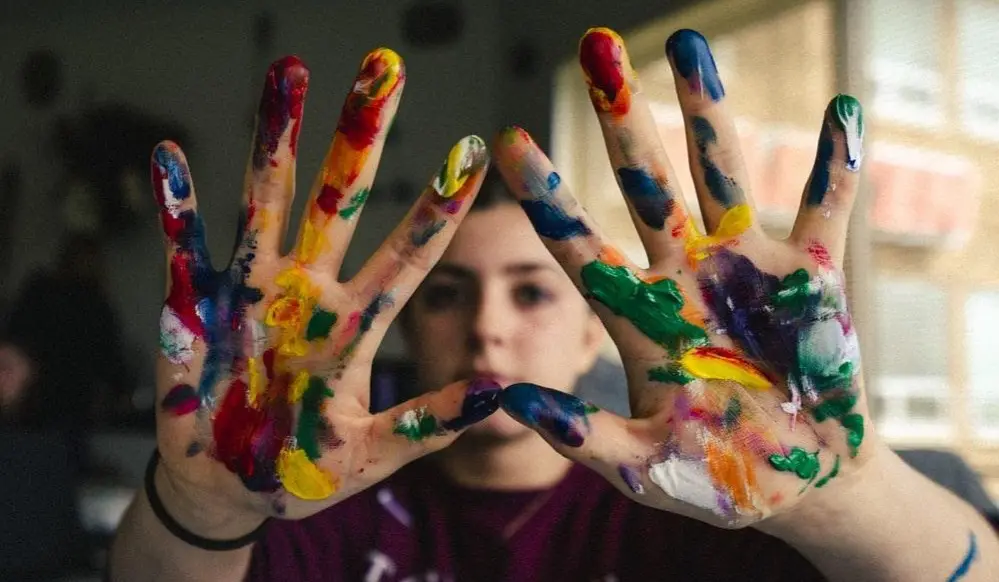 Photo by Naitian(Tony) Wang
Photo by Naitian(Tony) Wang
Apply Oil Paint to Various Surfaces
—Oil paint has well and truly deserved its place on the canvas, but that isn’t all it is good for. Experiment with what other kinds of surfaces you can apply oil paint too. It is truly great for crafting.
Use Sponges to Create Unique Textures
—Every painter should have a sponge whether they are painting with oil or not. A sponge helps you to apply a really unique pattern to your artwork, and can really bring it to life.
Try Encaustic Painting for More Engaging Creations
—Encaustic painting is becoming more popular and it is easy to see why. You can use encaustic with wet oil paint for some truly unique effects. This is a great way to take control of your texture!
Experiment with Different Canvas Textures
—A fun way to experiment with your painting process is to try surfaces with different textures. These fun changes can bring a lot to your paintings, and some can be incredibly useful for creating unique looks. When learning how to paint in oil, experimenting with this can help you learn a lot about your style and brushes.
Avoid Mixing Your Paint Too Well
—One of the biggest charms when it comes to oil painting is how well it can mix, but you can mix it too well. Many painters immediately mix their paint until it is a single fluid color, but this generally flattens the look. While you can certainly mix your paint to make the desired color, leave some of the unmixed perfections. It adds a lot.
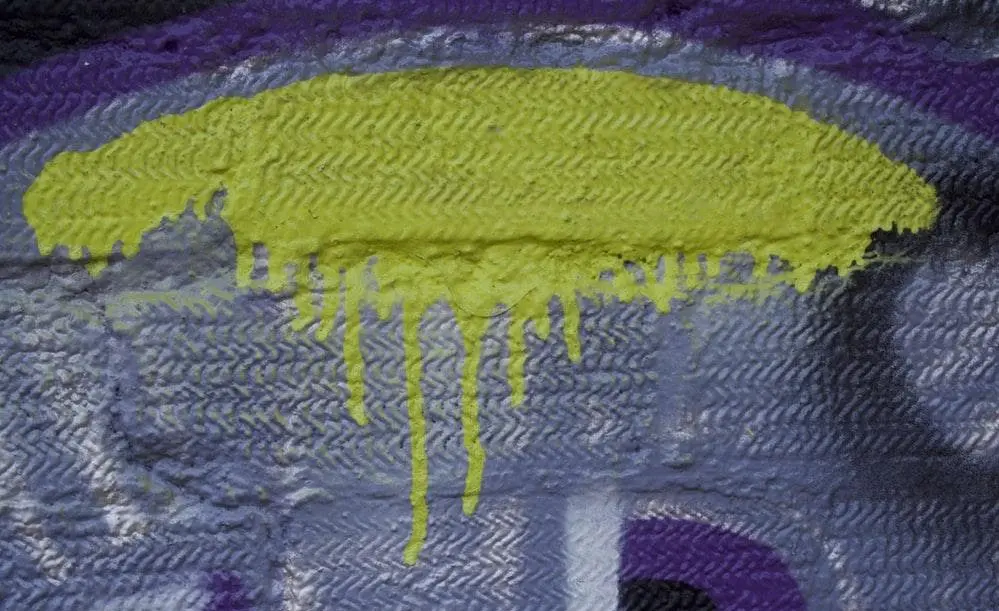 Photo by Paul Blenkhorn @SensoryArtHouse
Photo by Paul Blenkhorn @SensoryArtHouse
Let Paint Dry Between Color Changes to Avoid Mixing
—An easy mistake when learning how to paint in oil is to not let your paint dry when you switch colors. Oil paint is notorious for easy mixing, so if you need two colors side by side, let one dry first. It can be a pain, but it is better than accidentally mixing your colors.
Add Extra Oil for a Thinner Texture
—A simple but necessary oil painting tip is to understand that you can control oil paint consistency. Try adding oil to your paint if you want it to be thinner. It works like a charm.
Try Mixing Your Own Paints with Oil and Pigment
—Some people like to have complete control over how they use their paint without fear of it drying it. Mixing your own paint allows you to only make as much as you need. It is also great for creating custom colors.
Use Paints from a Set Until You Learn How They Go Together
—The real benefit to using paint sets when learning how to paint in oil is color consistency. Paint from sets is generally made to look good next to other paints in the set. Try using sets to get good color flow before you start collecting colors at random.
For Unique Looking Backgrounds, Try Finger Painting
—Finger painting is not just for children and it can be great with oil paint. Put on your favorite gloves and use your fingers to make a completely original background.
Leave Paintings at Room Temperature to Dry
—Oil paint can be a bit of a pain because of its dry time. Since dry time can always be influenced by the environment, avoid keeping your drying paintings in hot or cold. It can influence the overall product.
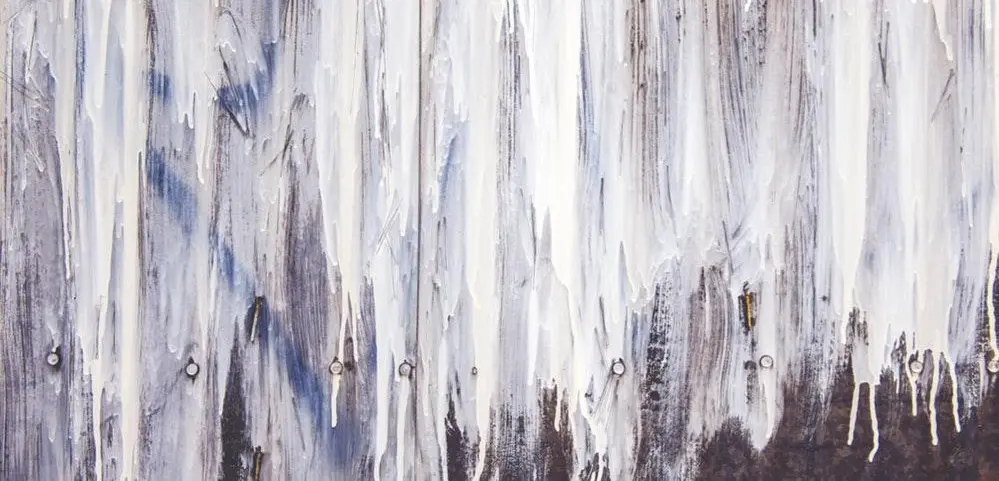 Photo by Tim Mossholder
Photo by Tim Mossholder
Hang a Painting for a Drip Effect
—Drip effects are becoming all the rage because of how cool they look. If you are interested in trying this approach, simply apply some slightly runny paint and hang it up. Gravity will take it from there.
Use Broader Brushes for Backgrounds and Finer Brushes for Detail
—Different brushes suit different purposes. While there are no hard rules here, a thicker brush makes for more consistent backgrounds. Transversely, fine brushes are better for adding details.
Try Holding Your Brush at Different Orientations
—Believe it or not, there are different ways to hold a paintbrush. Experiment with holding your brush at different angles to see how it influences your control.
Wash Your Brushes Thoroughly Between Uses and Allow to Air Dry
—If there is one way to make oil painting expensive, it is treating brushes poorly. The biggest rule when learning how to paint in oil as a hobby is brush care. Paint those brushes quickly between each use to preserve their integrity.
Rinse Your Brushes Between Paints to Avoid Crossing Colors
—An easy way to ruin a painting is not knowing how to mixcolors the right way .. If you are going to use the same brush for two paints, make sure you wash it off. This is crucial for guaranteeing that your paints show up the right color every time.
Place Colors Together on A Pallet Without Mixing for A Cool Color Effect
—Sometimes you want an even color, but other times you want more life. Mixing two or three colors, giving them a single swirl, and then painting can be great. It gives a unique multicolored look that you are guaranteed to love.
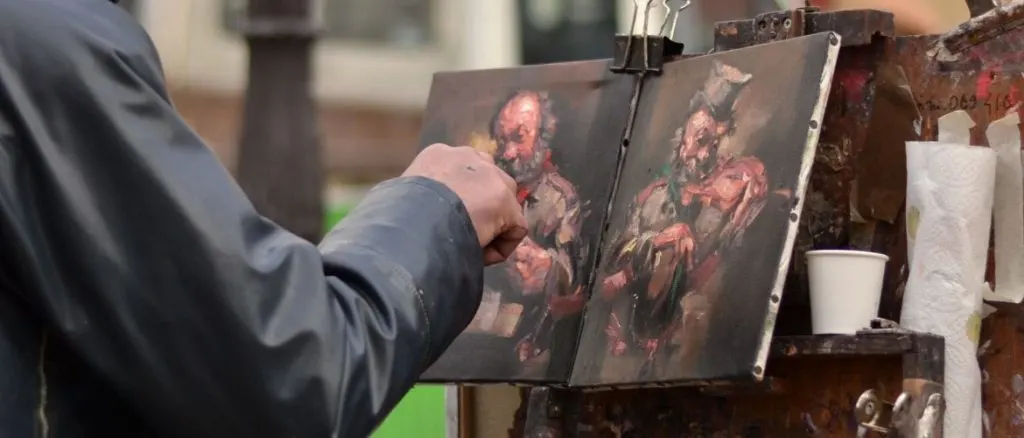 Photo by Andrea Lagareiro
Photo by Andrea Lagareiro
Try Painting with A Wet Brush vs. A Dry Brush
—When learning how to paint in oils, brushes are a hot topic. The wet brush vs. dry brush debate is ongoing. Each style gives a completely unique stroke, so experiment with these and see what you can make. You might find that you have more tools than you thought!
Avoid Adding Any Actual Water to Your Painting
—Since oil paints are oil-based, you want to avoid mixing water with them. While a damp brush can work fine, dodge any actual fluid getting in your paints. It can disrupt the look and feel of the painting greatly.
Protect Your Oil Paintings from the Sun
—After you have made a beautiful creation, the last thing that you want is to lose it. Oil paintings, while able to last the ages, can be susceptible to the sun. If you are going to preserve your painting in a sunny area, cover it with glass or varnish with UV protection.
Run A Dry Brush Over Partially Dried Paint for A Cool Background Texture
—Though running a paintbrush over partially dried paint can ruin a painting on accident, it has other uses. If you do this intentionally, you can end up with some very color and texture spreads. Use it to spice up your art.
Avoid Using Just One Color
—The beauty of oil paints is that they are high in pigment. This means that they look beautiful whenever you use them. To capitalize this, use different colors throughout the painting to create a more vibrant effect.
Use Alcohol To Clean Away Oil Paint
—In the event, you have an emergency need to clean away oil paint, try using a bit of alcohol. Alcohol on a cotton swab or cloth can work wonders against a pesky paint problem.
[do_widget id=custom_html-19]Conclusion
When it comes to oil painting, the sky really is the limit. There are so many ways to create amazing colors and textures, which makes it so unique. People can use the same oil paints and paint the same image and end up with something different. As you explore with your oil painting process, dare to ask: what if? You might just find the secret to your style this way!

